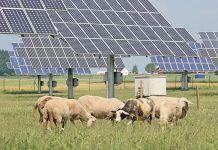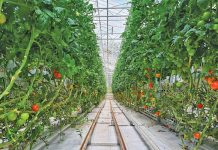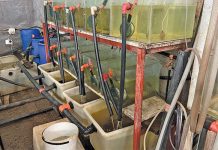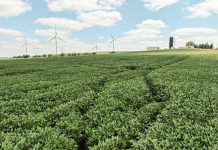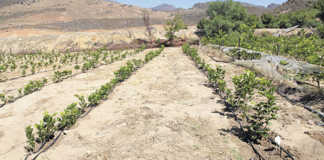
Photo: FW Archive
Farming in South Africa is an expensive, high-risk industry. Rising input costs, unpredictable climate conditions, and market volatility have made it increasingly difficult for farmers to maintain financial stability. As a result, effective debt management has become critical to ensuring the survival of farms.
For many farmers, debt is a necessary tool for expanding their operations, purchasing inputs, and covering operational expenses. However, outstanding or carry-over debt is a serious financial burden, placing farming businesses under extreme pressure until it is settled.
In agriculture, where cash flow is often unpredictable, borrowing money is sometimes unavoidable. Farmers across generations have faced this predicament, and the key to overcoming it lies in how the situation is managed.
Handled correctly, debt management can preserve valuable relationships with creditors, build long-term trust, and even strengthen a farmer’s reputation for financial responsibility. Poor handling, however, can lead to strained relationships and financial ruin.
Understanding farm debt in South Africa
According to the Department of Agriculture’s report ‘Abstract of agricultural statistics, 2024’, the total agricultural debt increased from R187 billion in 2019 to over R200 billion in 2024. Around 61% of farm debt is held by commercial banks like Absa, FNB, Standard Bank, and Nedbank.
Land Bank, once a significant agricultural financier, has seen its loan book shrink from R45 billion in 2020 to R17 billion in 2024, limiting access to affordable financing.
Aside from bank loans, many farmers also rely on supplier credit and private lenders, often at high interest rates, making repayment challenging.
Key factors driving farm debt
Several elements contribute to the growing levels of farm debt in South Africa. They are:
- High capital costs. Farming requires significant upfront investments in land, equipment, seeds, fertiliser, fuel, irrigation systems, and infrastructure.
- Market volatility. Commodity price fluctuations affect farm profitability and farmers’ ability to repay loans.
- Climate change and natural disasters. Droughts, floods, and extreme weather events reduce yields and increase farmers’ reliance on debt for recovery.
- Rising input costs. Fuel, fertiliser, and agrochemical prices have increased by over 30% in the past five years, according to the Department of Agriculture.
- Limited access to affordable credit. Emerging farmers struggle to obtain loans due to a lack of collateral, forcing them into high-interest borrowing arrangements.
- Infrastructure and logistics challenges. Inefficiencies in critical transport networks, including ports and rail systems, lead to increased transport costs and reduced profit margins.
Effective strategies for managing farm debt
While debt is necessary for growth and operational sustainability, overleveraging – where a farmer’s loan repayments exceed their income – creates financial risks. Farmers must take proactive steps to manage their financial obligations.
These include:
1. Engaging with creditors early on. The worst thing a farmer can do when struggling with debt is to ignore their creditors. Instead, the best approach is to proactively communicate with those who are owed money.
- Visit each creditor in person and explain your financial predicament honestly;
- Support your explanation with clear facts and figures – show the difference between your long-term average production and your most recent yields;
- Provide a written explanation of your situation and a realistic plan for repayment; and
- Commit to keeping creditors informed about your recovery process.
Many farmers are surprised at the positive response from creditors when they take this approach. Financial institutions and suppliers have a vested interest in keeping farming businesses operational, because supporting farmers through difficult times ensures they recoup their money in the long run.
2. Regularly assessing your debt and conducting financial planning. Farmers should review their financial positions at least twice a year to:
- Assess total outstanding debt (bank loans, supplier credit, and overdrafts);
- Compare debt levels to farm income and asset values;
- Identify high-interest loans that may require refinancing; and
- Track loan repayment schedules to avoid penalties and late fees.
A structured debt repayment schedule helps farmers track their obligations and make informed financial decisions.
3. Managing your cash flow and diversifying your income. One of the biggest reasons farmers struggle with debt is poor cash flow management.
They can improve cash flow by:
- Diversifying income streams. Consider agritourism, value-added processing (for example, cheese production), or leasing unused land;
- Timing purchases wisely. Buy inputs during the off season when prices are lower;
Negotiating better payment terms. Work with suppliers to secure extended payment periods; and - Ensuring steady cash flow. This will help farmers cover loan repayments and operational costs without the need to do additional borrowing.
4. Refinancing and debt restructuring. Farmers struggling with high-interest loans or rigid repayment structures can explore debt restructuring and refinancing options, including:
- Refinancing. Take out a new loan with a better interest rate or longer repayment period to pay off existing debt; and
- Debt restructuring. Negotiate with lenders to extend repayment terms to lower monthly instalments; switch from short- to long-term loans for better financial flexibility; and implement temporary payment pauses during tough seasons.
- Farmers should engage with financial advisers to explore refinancing opportunities with agricultural banks, government-backed programmes, and alternative lenders.
5. Reducing operating costs. To minimise debt reliance, farmers should implement cost-cutting measures such as:
- Precision farming technologies to optimise input use and increase efficiency;
- Bulk purchasing fertilisers and seeds through co-operatives;
- Sustainable energy investments like solar power to reduce electricity costs; and
- Leasing equipment instead of purchasing to lower capital expenditure.
Small savings across different operational areas can significantly improve financial stability.
6. Avoiding common financial pitfalls. Farmers often make the following mistakes, leading to unmanageable debt:
- Overborrowing. Taking out too many loans without a clear repayment plan.
- Overreliance on supplier credit. High-interest supplier loans can quickly become unmanageable.
- Poor record-keeping. Inaccurate financial records lead to unexpected cash shortfalls.
- Ignoring risk management. Not preparing for economic downturns or climate risks increases financial vulnerability.
Leveraging government support
When it comes to grants and subsidies, farmers should explore programmes which help to reduce the need for high-interest borrowing:
- The Comprehensive Agricultural Support Programme, which provides funding for infrastructure, inputs, and training;
- The AgriBEE Fund, which helps emerging farmers with capital and operational expenses; and
- Land reform and development grants, which assist with land acquisition and improvement.
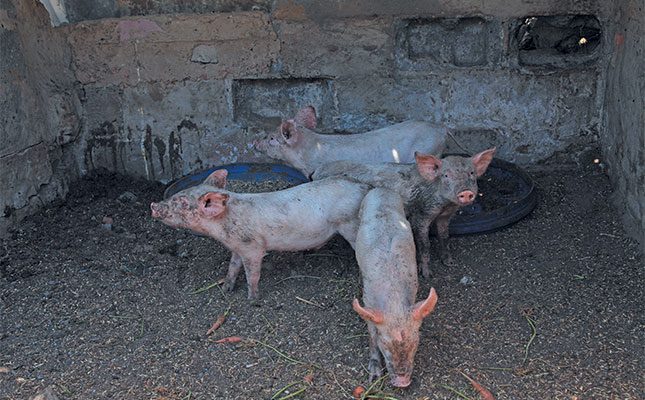
Emerging farmers can approach the AgriBEE Fund to help them cope with capital and operational expenses.
Managing climate risk to avoid debt accumulation
With only 29% of climate-related economic losses insured, according to the World Economic Forum’s white paper ‘Insuring against heat: navigating risks in global warming’, farmers should invest in climate-smart strategies to prevent financial calamities.
Some of these strategies are:
- Investing in drought-resistant crops and water-use-efficient irrigation systems;
- Using protective infrastructure like greenhouses to shield crops from extreme weather;
- Implementing soil conservation practices like cover cropping and rotational grazing; and
- Securing parametric insurance to receive automatic payouts when climate thresholds are met.
By proactively managing climate risks, farmers can prevent revenue loss and avoid additional debt.
Keep creditors informed of progress
After negotiating repayment terms and implementing a recovery plan, it is crucial to maintain transparency with creditors.
Farmers should provide them with updates on a regular basis (at least once a month) on their financial progress, demonstrate adherence to the revised budget and action plan, and show evidence of successful cost reductions and revenue improvements.
By fostering open and honest communication with creditors, farmers build trust with them, increasing the likelihood of future financial support when needed.
Taking control of farm debt
Debt is a double-edged sword in farming; it can either drive growth and expansion, or lead to financial distress if mismanaged.
To navigate the challenges of farm debt effectively, farmers must regularly assess their financial position; improve cash flow and diversify income to maintain financial stability; explore refinancing and debt restructuring options to reduce repayment burdens; implement cost-saving measures to lower operational expenses; and utilise government grants, co-operative financing, and climate insurance to reduce debt reliance.
With careful financial planning, smart borrowing, and climate change resilience strategies, farmers can safeguard their businesses against financial distress and market volatility.
A proactive approach to debt management will ensure that South African farmers remain competitive, profitable, and sustainable in the long run.

